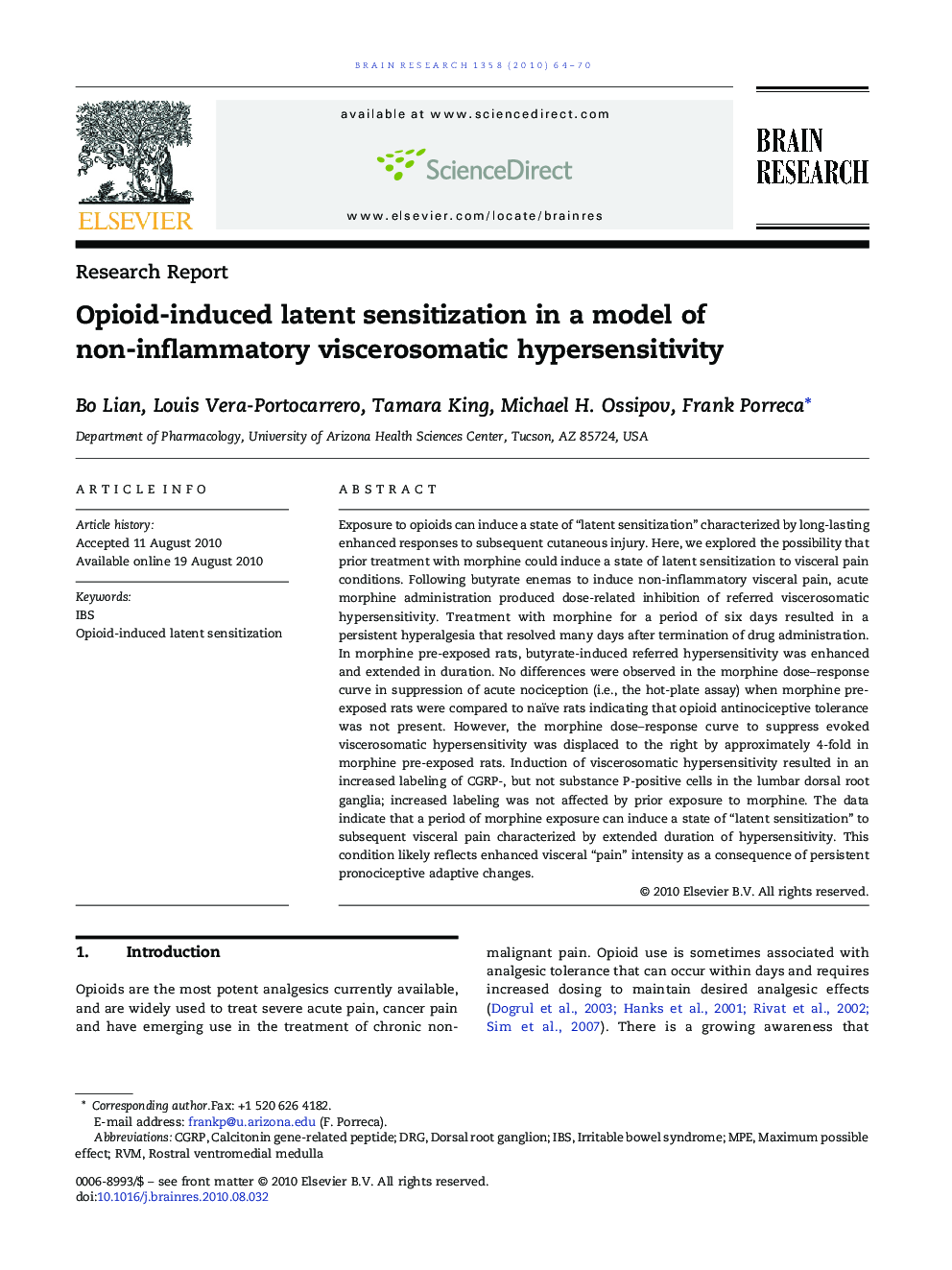| Article ID | Journal | Published Year | Pages | File Type |
|---|---|---|---|---|
| 6265429 | Brain Research | 2010 | 7 Pages |
Exposure to opioids can induce a state of “latent sensitization” characterized by long-lasting enhanced responses to subsequent cutaneous injury. Here, we explored the possibility that prior treatment with morphine could induce a state of latent sensitization to visceral pain conditions. Following butyrate enemas to induce non-inflammatory visceral pain, acute morphine administration produced dose-related inhibition of referred viscerosomatic hypersensitivity. Treatment with morphine for a period of six days resulted in a persistent hyperalgesia that resolved many days after termination of drug administration. In morphine pre-exposed rats, butyrate-induced referred hypersensitivity was enhanced and extended in duration. No differences were observed in the morphine dose-response curve in suppression of acute nociception (i.e., the hot-plate assay) when morphine pre-exposed rats were compared to naïve rats indicating that opioid antinociceptive tolerance was not present. However, the morphine dose-response curve to suppress evoked viscerosomatic hypersensitivity was displaced to the right by approximately 4-fold in morphine pre-exposed rats. Induction of viscerosomatic hypersensitivity resulted in an increased labeling of CGRP-, but not substance P-positive cells in the lumbar dorsal root ganglia; increased labeling was not affected by prior exposure to morphine. The data indicate that a period of morphine exposure can induce a state of “latent sensitization” to subsequent visceral pain characterized by extended duration of hypersensitivity. This condition likely reflects enhanced visceral “pain” intensity as a consequence of persistent pronociceptive adaptive changes.
Research Highlights⺠Morphine exposure enhances sensitivity to light touch in a model of visceral pain. ⺠Morphine exposure sensitizes rats to subsequent butyrate challenge. ⺠Morphine exposure increases CGRP in primary afferent neurons. ⺠Increased CGRP underlies opioid-induced latent sensitization.
